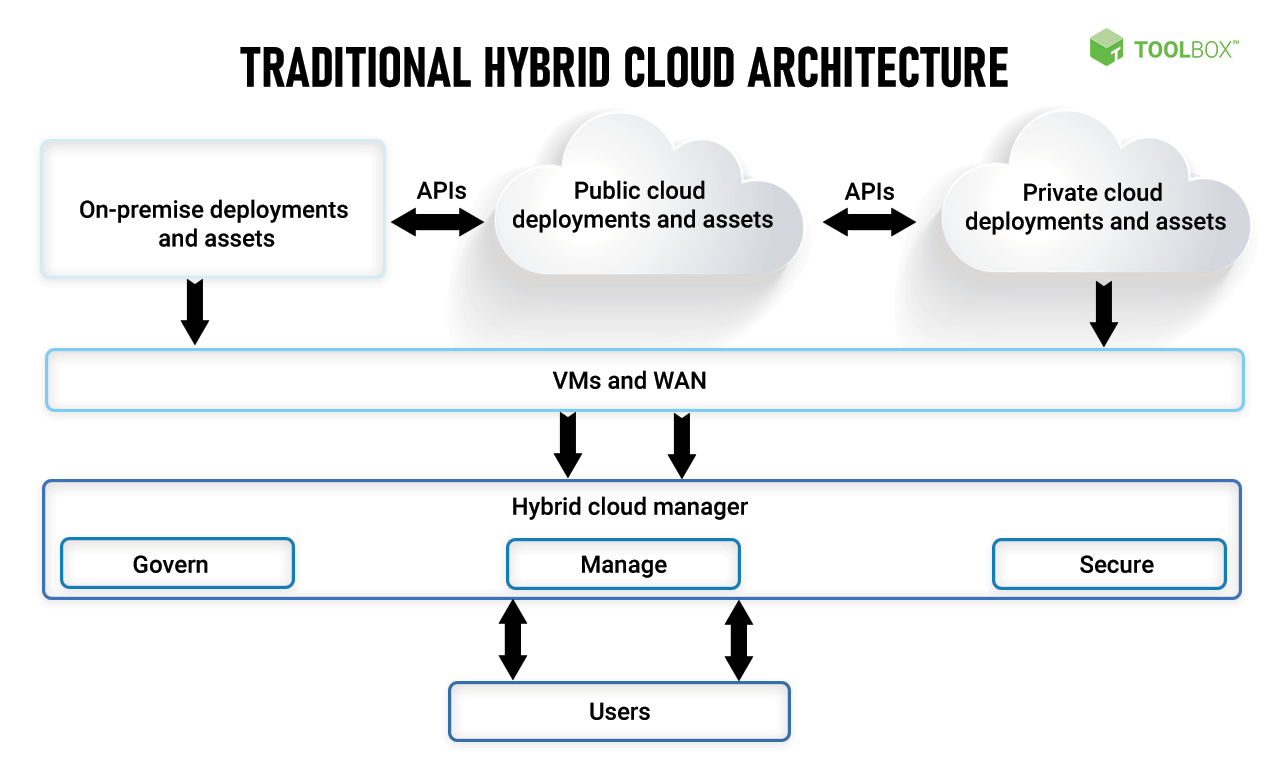Are you looking to optimize your IT infrastructure without compromising on flexibility and security? Hybrid cloud deployment might be your solution.
By blending private and public cloud services, you can tailor your tech environment to meet specific needs, scale resources efficiently, and enhance data security. But how do you ensure you’re deploying it effectively? That’s where best practices come in. You’ll discover tried-and-true strategies that will help you navigate the complexities of hybrid cloud deployment.
These insights will empower you to make informed decisions and achieve seamless integration. So, if you’re ready to harness the full potential of hybrid cloud technology, keep reading to unlock the secrets to a successful deployment!
Benefits Of Hybrid Cloud
Hybrid cloud helps save money. It allows businesses to use both public and private clouds. Companies pay only for what they use. This reduces waste. They can also avoid buying expensive hardware. It means spending less on equipment. Hybrid cloud is a smart choice for cost savings.
More space is available when needed. Businesses can grow easily with hybrid cloud. It handles more data without slowing down. Companies can add more resources. This flexibility keeps everything running smoothly. No need to worry about limits.
Hybrid cloud offers better security. Sensitive data stays in private clouds. They have strong protections. Public clouds handle less sensitive tasks. This method keeps data safe. Businesses can trust hybrid cloud for security.
Strategic Planning
Understanding what your business needs is very important. Talk with your team about what they need from the cloud. Make a list of important tasks. See what tools can help you. This helps in using cloud resources effectively.
Clear goals make work easy. Decide what you want from the cloud. Is it saving money or faster work? Maybe it’s about better security. Set targets that are easy to measure. This helps track progress. It’s important to stay focused.
Look for cloud providers that meet your needs. Check their services and support. Compare prices and features. Read reviews from other users. Choose a provider that offers good value and reliability. This ensures smooth operations and satisfaction.
Infrastructure Design
Blending on-premises systems with the cloud needs a clear plan. Start with mapping resources. Know what is on-site and what is in the cloud. This helps in keeping things connected. Use secure connections for data flow. It ensures safety. Also, keep systems updated. This will help in smooth integration.
Network setup is key in hybrid cloud. Use strong firewalls to protect data. Ensure reliable internet for constant access. Choose right network tools to monitor traffic. This helps in identifying problems early. A backup network plan is also wise. It keeps services running during issues.
Storing data safely is vital. Use a mix of local and cloud storage. This provides flexibility. Encrypt sensitive data before storing it. It adds an extra layer of security. Regularly check storage usage. This helps in managing costs. Plan for scalable storage. It grows with your needs.

Data Management
Data migration is a big task. Start with a clear plan. First, check the data types. Make sure they match the new system. Use tools that help move data easily. Test the data after moving it. Fix any issues quickly.
Data consistency is very important. Keep data the same in all places. Use real-time updates. They help keep data accurate. Check data often for errors. Fix them when you find them. This keeps your data reliable.
Always have a backup plan. Backups keep your data safe. Use a regular schedule. Test your backup often. Make sure it works. Plan for quick recovery. This helps bring back data fast after a problem.
Security Measures
Keep users safe with strong passwordsand multi-factor authentication. Limit who can see and change data. Use a role-based access controlsystem. It helps to keep data safe. Check all accounts often. Make sure only right people have access.
Encrypt data to keep it safe. Use strong encryption methodslike AES-256. Data is safe when it travels and when it stays. Change encryption keys often. This keeps data even safer. Never share keys with anyone else.
Follow all lawsand rulesfor data. Know what rules apply to your data. Keep records of how data is used and kept. This helps in audits. Make sure you update policies to match new rules.
Monitoring And Optimization
Good tools help see how your system works. They show data in real-time. Use dashboards to make sense of this data. Alerts tell you if something goes wrong. Choose tools that are easy to understand. They should work well with your other systems. This makes fixing problems faster.
Smart resource use saves money and energy. Start by knowing what you need. Then, give each task just enough power. Do not give too much or too little. Adjust as work changes. This keeps everything running smoothly. Share resources between projects when possible. This helps use them better.
Keep track of how much you spend. Use cost-tracking tools to help. Find ways to spend less. Look for things you do not use. Turn them off when not needed. Set budgets for each part of your cloud. This helps control spending. Review costs often to spot changes quickly.
Disaster Recovery
A strong failover systemis crucial for disaster recovery. It helps when systems fail suddenly. The system should switch to a backup quickly. This reduces downtimeand keeps data safe. Regular checks are needed. This ensures everything works well.
Testing is important for recovery protocols. Practice makes them better. Teams should have drills often. This helps them know what to do. It also ensures protocolsare up-to-date. Making sure everyone understands their role is key.
Always look for ways to improve. Learn from past events. Gather feedback from teams. Use it to make systems better. Small changes can make a big difference. Keep track of new technologies. They can help improve disaster recovery plans.

Future Trends
AI and Machine Learning Integrationare crucial for hybrid cloud deployment. They help in automating tasks and improving efficiency. This saves time and resources. AI can predict failures before they happen. Machine learning can adapt to changing needs quickly. These technologies enhance decision-making. They provide valuable insights from data. This leads to better business strategies. AI and machine learning boost performance.
Edge Computing Impactis growing in importance. It processes data closer to the source. This reduces latency significantly. Edge computing improves real-time data analysis. It supports faster decision-making. This is vital for industries like healthcare and finance. Edge computing enhances security by localizing data. It reduces risks associated with data transfer. This is essential for protecting sensitive information.
Evolving Security Technologiesare vital in hybrid cloud environments. New tools are emerging to safeguard data. Encryption methods are becoming more advanced. They ensure data privacy and integrity. Firewalls are smarter now. They detect threats more accurately. Security technologies adapt to new challenges. They protect against cyber attacks effectively. Keeping data safe is a top priority.

Frequently Asked Questions
What Is Hybrid Cloud Deployment?
Hybrid cloud deployment combines private and public cloud environments. It offers flexibility, scalability, and cost efficiency. Organizations can optimize resources by using both on-premises infrastructure and cloud services. This approach enhances data security and operational agility, making it a popular choice for businesses seeking cloud solutions.
Why Choose Hybrid Cloud Over Other Models?
Hybrid cloud offers more flexibility compared to other models. It allows businesses to balance workloads between on-premises and cloud environments. This model ensures data security and cost savings. Companies can leverage specific cloud services while maintaining control over critical data.
How Does Hybrid Cloud Ensure Data Security?
Hybrid cloud enhances data security by using a mix of private and public clouds. Sensitive data is kept in private environments, while non-sensitive data can utilize public cloud benefits. This setup minimizes risks and ensures compliance with regulations, providing businesses with a secure and reliable solution.
What Are Best Practices For Hybrid Cloud Deployment?
Best practices include evaluating business needs, selecting the right providers, and ensuring seamless integration. Prioritize data security and compliance. Regularly monitor and optimize resources. Implement automation and disaster recovery plans to enhance efficiency and minimize risks. These practices ensure a successful hybrid cloud deployment.
Conclusion
Embracing hybrid cloud deployment can offer flexibility and efficiency. Follow best practices to ensure smooth integration and operation. Start by understanding your specific needs and goals. Security should always be a top priority. Monitor performance regularly to spot potential issues early.
Training your team is essential for success. Keep communication open among all stakeholders. This approach ensures everyone stays aligned with your objectives. With careful planning, hybrid cloud can transform your business operations. Stay proactive and adapt to changes for continuous improvement.
Your journey to hybrid cloud success begins with these foundational steps.
Read More:
- Network Automation Tools ROI: Boosting Efficiency & Savings
- Noise‑Cancelling Earbuds Battery Life: Maximize Your Usage
- Ci/Cd Pipeline Tools Comparison: Boost Your DevOps Efficiency
- Serverless Vs Containerized Workloads: A Comparative Guide
- Vr Content Creation Tools 2025: Revolutionize Your Creations
- Best Gaming PC Build under $1500: Ultimate Performance
- Best Cross‑Platform Mobile Frameworks 2025: Top Picks
- Javascript Frameworks Benchmark 2025: Speed & Performance

